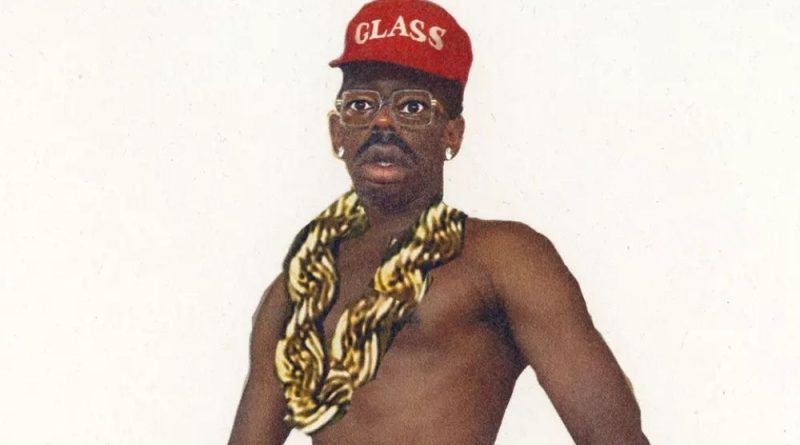Why Tyler, The Creator’s ‘Zig-Zag’ Lyric Matters
From toxifillers.com with love
After teasing fans with an installation at a concert at the Barclays Center earlier this month, hip-hop superstar Tyler, The Creator, dropped his ninth studio album, “Don’t Tap the Glass,” on July 21. Featuring collabs with Pharrell Williams (under both his name and his alter ego, Sk8brd), Yebba and Madison McFerrin, the hype surrounding the new album is real. Fans are digging into the details of his lyrics, with one line from the track “Stop Playing With Me” catching a lot of attention online. It goes like this: “Spending Converse money, what I mean is / Burning white paper, that’s a Zig Zag.”
For some, it might seem like just a simple reference, but if you know Tyler’s artistic style and the rich history of hip-hop and counterculture, it’s a perfectly placed nod that says a lot, even coming from an artist who’s publicly sober.
Tyler has long been open about his sobriety and has mentioned in interviews that he’s never really been into alcohol and that he actively avoids substances. This makes his mention of Zig-Zag rolling papers even more interesting. It’s not an admission to using them, but rather a sign of how deeply the iconic rolling paper brand is woven into the language and look of creative rebellion and hip-hop culture, going way beyond smoking weed.
Now, let’s explore what Tyler is getting at when he drops the Zig-Zag name.

Cultural Credibility
From Dr. Dre and The Notorious B.I.G. to Redman and Eminem, legendary hip-hop artists have name-dropped Zig-Zag for decades. Its regular appearance in lyrics cements its status as a touchstone, a shorthand for a lifestyle that values freedom, creativity and a touch of rebellion.
Tyler grew up immersed in the hip-hop scene and played a key role in shaping its modern sound. His use of ‘Zig-Zag’ in lyrics reflects more than wordplay—it shows his fluency in this shared language, highlighting his deep connection to the genre’s history and its lasting symbols. It’s a subtle but powerful way to confirm his place among hip-hop’s greats.
The Aesthetic of Nostalgia
Tyler The Creator’s artistic direction—whether it’s his album art, music videos or fashion lines—is known for its cool mix of influences. He often pulls from classic Americana, vintage skate zines, old-school weed branding and lo-fi aesthetics. It’s a carefully crafted visual world that feels both nostalgic and unmistakably modern.
In this context, Zig-Zag fits seamlessly into Tyler’s visual playbook. The brand’s instantly recognizable orange packaging and that famous Zouave soldier logo are long-standing symbols of counterculture. Much like his love for retro fonts, cartoonish graphics and bold colors, Zig-Zag’s visual identity aligns perfectly with Tyler’s own—a look that’s both distinctive and impactful. With decades of cultural relevance and consistent design, Zig-Zag serves as a timeless touchpoint, connecting generations through a shared language of creative expression.”
Irony and Subversion
One of Tyler’s most engaging artistic traits is his playful use of cultural symbols. He masterfully flips meanings, pokes fun at norms and uses loaded references with his signature wink. His art is layered, often laced with tongue-in-cheek humor, always inviting you to dig beneath the surface.
A Zig-Zag shoutout as an artist who doesn’t smoke cannabis is totally on-brand for Tyler. It’s a clever bit of irony and subversion. It’s a respectful nod to the brand’s cultural weight and its ties to a certain lifestyle. It’s his unique way of showing respect to the origins and evolution of the culture he comes from, all while sticking with his personal choice to stay sober.

The Shared History of Zig-Zag and Music
Zig-Zag’s legacy as a counterculture symbol spans decades. Founded in the 1800s, the brand gained iconic status during the cultural upheaval of the 1960s and ’70s, becoming a staple in rock scenes and underground movements. Its distinctive branding made its way onto album art, murals and became woven into the era’s cultural fabric. More than 50 years later, Zig-Zag is still a part of the zeitgeist—a rare brand that has stayed relevant through shifting trends and generations.
“Zig-Zag has been woven into the fabric of music and culture for decades — name-dropped in lyrics by artists from Dr. Dre to A$AP Rocky, featured in iconic album art, and passed around at studio sessions that shaped albums,” says Maggie Streng, Zig-Zag’s brand marketing director. “From the early days of hip-hop to today, Zig-Zag stood alongside artists who challenge norms, set trends, and build community. Tyler, The Creator’s recent shoutout is the latest proof that Zig-Zag remains a cultural staple, one that continues to resonate with a new generation and honor the legacy of cannabis culture.”
The rolling paper brand’s bold visual style, combined with its deep roots in music and rebellious movements, has made Zig-Zag a frequent touchpoint for artists and designers across different genres. The iconic packaging and logo have been sampled, flipped and re-imagined countless times in streetwear, merchandise and contemporary art.
As cannabis becomes increasingly mainstream, legacy brands like Zig-Zag serve as a kind of cultural thread that connects old-school roots with today’s evolving landscape.
When Tyler name-drops Zig-Zag in “Stop Playing With Me,” it’s not just some random lyric. It’s intentional. The shoutout feels like a meaningful tip of the hat to a brand that’s long symbolized creativity, rebellion and artistic freedom.
In Tyler’s world, that kind of thing matters.

